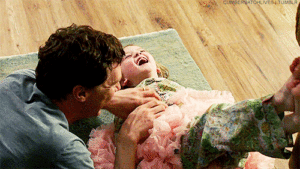
I have been at this mommy gig for eight years now and I have learned a thing or two when it comes to toddler temper tantrums and time outs. Each of my kids are different and require a different way of disciplining them based on their individual differences. With that being said, I have learned to take a cue when it comes to time out and when its appropriate to start it. Here sre some tips on when starting time out is a good idea with your littles…
When to Start Using Timeout
Starting timeout at a young age helps shape your child’s behavior and teaches her what to expect from the discipline technique, but starting too young has no effect, because your child probably doesn’t understand the point. Experts recommend starting timeout between the ages of 18 months and 2 years. By this age, your child can start making connections between the timeout and behavior.
How to Use Them Successfully
Instead of thinking of timeout as a punishment, think of it as a chance for your child to take a break from the situation that leads to the unwanted behavior. It’s a way to stop a certain behavior before it gets out of control. Taking a step back can help your toddler calm down away from the action before returning to the activity.
Start by choosing a suitable timeout spot. You want somewhere away from the action where your tot can’t see the television or watch other kids play. A quiet area without anything fun or distracting is ideal. It’s best to use one consistent spot, but you can adjust the spot if your normal one isn’t convenient.
Point out the behavior that is not acceptable. You might say, “Biting is not okay. Biting hurts.” Then, take your child to the timeout area. Experts usually recommend a timeout of about one minute for each year of your child’s age, so a 3-year-old gets a three-minute timeout. Not getting the results you want with the short timeout? Add some additional time equal to half your child’s age. For a 3-year-old, that would mean a total of 4 1/2 minutes. Set a timer, so your child doesn’t argue as to how long she has to stay in timeout.
When the timer rings, reiterate which behavior is unacceptable. You might say, “Remember, we don’t bite. Now, let’s go play nicely with our friends!” You can keep the experience positive by giving your little one a hug at the end of the timeout and letting her return to the fun.
Tips for Using Timeout
Need some more tips for using timeouts effectively? When you send your little one to the timeout area, keep in mind:
- Stay calm. You shouldn’t send your child to timeout when you’re angry because it’s not about punishment. You want your child to calm down and behave nicely, so yelling or acting angry is counterproductive. Keep your cool, and help your child use the time as a way to regroup.
- Look for signs that your child may do something that lands him in timeout. If you notice he’s getting frustrated with his sibling, you might sit next to him and give him attention before he hits or bites. That attention from you and redirection of his behavior may be enough to avoid the timeout completely.
- Follow your child’s lead. Some toddlers become more upset by being alone in timeout. It can make the situation worse instead of helping him calm down. If your tot doesn’t respond well to timeout, think of other ways to give him a break from the action.
- Tell your child about your plans to use timeout before you ever send him. Show him where the timeout spot is, and let him know he may have to go there.
- Use timeout consistently for behaviors you’re targeting. You don’t have to send your child there for every little issue, but consistency for certain actions shows your child you mean business. For example, if hitting is an issue, use timeout consistently when your child hits instead of letting him get away with it sometimes.
- Send your child to timeout immediately following the misbehavior. If you wait even for a short time, you lose the connection between the behavior and the timeout.
- If your child refuses to stay in timeout, sit with him and calmly remind him that he is taking a timeout. Put him back in the designated seat if he gets up. If he screams, let him know he has to stay in timeout until he can calm down, even if his timer goes off earlier.
- Let the timeout go after it’s done. Don’t keep bringing it up or hanging it over your toddler’s head. Give him the benefit of moving on with a clean slate while reminding him of your expectation that he not behave in the same way again.




0 Comments